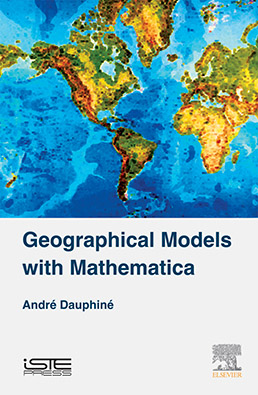
All scientists develop models. Geographers build models to understand and explain the relationships between societies and their environment, the locations of objects, people and activities, and the organization of spaces and territories. This book provides a fairly comprehensive overview of the types of models necessary for the development of new geographical knowledge: stochastic models, models for data analysis, for geostatistics, for networks, for dynamic systems, for cellular automata and for multi-agent systems.
All these models are first discussed in their theoretical context. The author goes on to provide over 65 programs, written in the Mathematica language, that formalize these models. Case studies are provided to help the reader apply these programs to their own studies.
Part 1. Modeling the Relationships between Societies and Nature
1. The Theoretical Context of Classical Geography.
2. Statistical and Probability Models for Given Relationships Between Societies and the Natural Environment.
3. Models of Ordinary Dynamic Systems.
Part 2. Modeling Geographic Locations
4. Theories of Geographical Locations.
5. Theoretical Geolocation Models.
Part 3. Spatial Structures and Territorial Dynamics
6. Theories Used to Understand Territorial Structures and Dynamics.
7. Models of Basic Structures: Points and Fields.
8. Models of Basic Structures: Networks.
9. Geographical Space as a Mixture of Basic Spatial Structures.
10. Morphogenetic Macro- and Micro-models.
André Dauphiné is Honorary Dean of the University of Nice Sophia-Antipolis in France, founder member of the Dupont Group and a recognized expert in theoretical and quantitative geography. He is the author of books on the theories of complexity, fractal geography, risks and disasters.